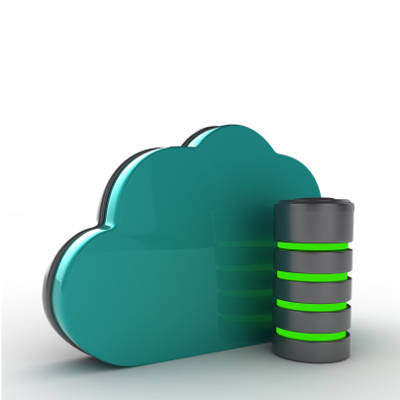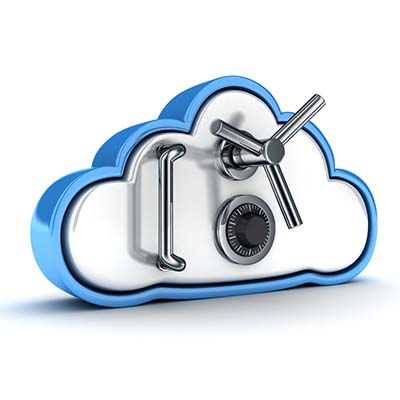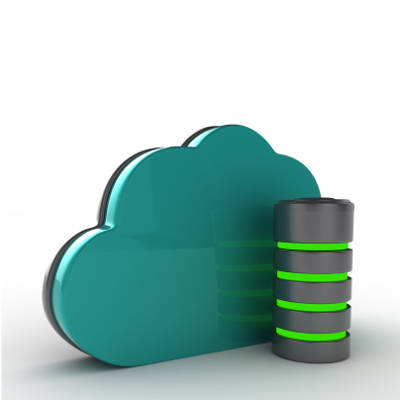Cloud Storage Offers Benefits to Small Businesses

With businesses dealing with and storing more data, cloud storage platforms have begun to be extremely important for the modern small business. It took a while for small business decision makers to implement cloud storage solutions for their businesses, which is largely to blame on the stigma of insecurity the cloud had. Today, however, cloud platforms are used for all types of utility. Today, we’ll go into the types of cloud storage, and their benefits to a small business.
The CLOUD Act Explained

Another eleventh-hour spending bill passed through the U.S. Congress and was signed into law on March 23, 2018. This time, however, there was a certain earmark that may work to erode individual privacy protection around the globe. The new law, called the Clarifying Lawful Overseas Use of Data (or CLOUD) Act, amends the Stored Communications Act of 1986 and gives unelected American officials extensive powers over global digital privacy rights.
Cloud Storage Offers Benefits to Small Businesses

With businesses dealing with and storing more data, cloud storage platforms have begun to be extremely important for the modern small business. It took a while for small business decision makers to implement cloud storage solutions for their businesses, which is largely to blame on the stigma of insecurity the cloud had. Today, however, cloud platforms are used for all types of utility. Today, we’ll go into the types of cloud storage, and their benefits to a small business.
The CLOUD Act Explained

Another eleventh-hour spending bill passed through the U.S. Congress and was signed into law on March 23, 2018. This time, however, there was a certain earmark that may work to erode individual privacy protection around the globe. The new law, called the Clarifying Lawful Overseas Use of Data (or CLOUD) Act, amends the Stored Communications Act of 1986 and gives unelected American officials extensive powers over global digital privacy rights.
The law allows U.S. officials, and those nations that the U.S. deems worthy, to extend their reach when they are looking to obtain digital information that isn’t hosted in the United States. With overwhelming support of both the U.S. Department of Justice and major technology companies, Congress didn’t waiver and pushed it through with the spending omnibus only a day after it was given to legislators.
What Does This Mean?
For the individual, this law is seemingly a major loss. Now governments from all around the world have fewer impediments when conducting criminal and civil investigations. The new law allows them access to see an individual’s personal information or their interpersonal communications with others. Traditionally, when foreign governments requested content information from U.S.-based technology companies, it wasn’t always a formality that the American companies would comply. Since the U.S. deals with many nations, if information is requested by a foreign government, they would typically decide whether the nation that is requesting the data had a prior record of human rights abuses, and then decided whether they will put pressure on the company to comply with said government. In fact, the U.S. is a member of the Mutual Legal Assistance Treaty (MLAT), and largely dealt with them exclusively to avoid giving information that could put human lives at risk.
With the passage of the CLOUD Act, the executive branch of the U.S. Government, led by President Donald Trump and Attorney General Jeff Sessions, will be able to determine who to share this information with, and who to deny it to. In essence it undoes the protections that were in place to ensure that data wouldn’t be used as a bargaining chip by the executive branch. By removing the protection of legislative and judicial oversight, a lot of power has been placed in the hands of appointees in high-profile executive cabinet positions, even though none of these positions were directly elected.
Now, U.S. and foreign law enforcement will have powerful new mechanics at their disposal. They can seize data for any purpose. This puts everyone’s private messages, email, social media activity–some of the most personal moments of a person’s life–on the table, without the process of getting a warrant. Previously, warrants were required, but with the passage of this law, prosecutors are given all the teeth they need to subpoena the records they need.
Here is a short recap of the CLOUD Act. It will:
- Enable foreign police to collect and wiretap people’s interpersonal communications without obtaining a warrant to do so.
- Allows foreign nations to demand records saved and stored by American companies
- Allows the U.S. President to enter “executive agreements” designed to help foreign police agencies obtain data regardless of that regime’s human rights record.
- Allows foreign police to obtain and collect data without notifying the party.
- Gives U.S. police the right to grab data anyplace, no matter where it is stored.
One organization that has criticized the new law is the Electronic Frontier Foundation. In a public statement, they called it a “dangerous expansion of police snooping” and that it would “erode privacy protections around the globe.” They go on to state:
“Legislation to protect the privacy of technology users from government snooping has long been overdue in the United States, but the CLOUD Act does the opposite, and privileges law enforcement at the expense of the people’s privacy. EFF strongly opposes the bill.”
At Catalyst Technology Group, we think data privacy is important. Unfortunately, a large number of the elected officials in the U.S. Congress apparently aren’t inclined to agree. To ensure that your data stays private, instituting data protections such as encryption is important. What are your thoughts on the CLOUD Act? Could it be beneficial to the United States? Should individuals’ privacy concerns be addressed? Leave your thoughts in the comments section below.
The Cloud: What Is Missing?

Cloud computing has been a godsend for many businesses by providing the flexibility and scalability they need to grow and enhance their offerings. Cloud computing, of course, also provides some capital cost reduction. There is no question that the cloud brings plenty of benefits to companies small or large–they now have the ability to pay per month for the computing resources they were making hefty capital investments for not too long ago; and, by-in-large, these investments pay off.
One problem we’ve seen over the years is that companies are so enthusiastic about the prospects of moving data and business process to the cloud that they don’t properly plan their implementations. This can present organizations with wild scenarios where data is all over the place and that their once-reliable in-house computing environment is now disjointed and not working in concert with cloud-based resources.
In order to keep this from happening, organizations need to do their due diligence and find the cloud platform that is right for their needs, while proactively considering the threats their business faces by performing a hasty migration.
What’s missing from the cloud? For many businesses, proper planning.
Migration tips to consider
When moving to the cloud, you have to evaluate how you are going to get there with what you already have. Unfortunately, many businesses don’t consider their data, their applications, and their in-place integrations before committing, and pay for it afterwards.
- Start small and work from there – You wouldn’t dump everything on your on-premise network infrastructure, so why would you do it in the cloud? After all, these are still physical machines somewhere. Businesses should start with a single application, or process (like storage), or a new Internet-based application that is not critical for business use. Once this is successful, and you show clear metrics of success, you can start amping up your cloud migratory projects.
- Augment your existing infrastructure – A powerful benefit of the cloud is that it can extend what you are already in to. You don’t need to move all of your data and infrastructure to the cloud. Most businesses will benefit most from the hybrid-cloud platform. Moving non-essential infrastructure to the cloud can be a great way to utilize the power of hosted computing, without putting your business in jeopardy.
- Hosted solutions are hosted somewhere – You’d be amazed at how many people don’t consider how there is a physical data center hosting their “cloud-based” data and computing infrastructure. By selecting a cloud provider that uses industry-best practices in their management and security systems, you will know that your hosted data and infrastructure are kept on reliable and effective platforms.
- Cloud security has changed – Things have changed substantially in the past few years. Cloud computing has changed things in administration, but it has also changed things in security. With hosted computing that supported remote workers and anytime, anywhere access, network security couldn’t adopt the old “castle and moat” strategy because there were always too many holes in the firewall. This created the new security model where administrators and solutions focus on protecting data and providing managed access. If you are able to see the cloud as an extension of your on-premise infrastructure and create a model to ensure that data is secure and accessible, you are doing more than the typical organization who jumps into the cloud with both feet, only to fall right through. By looking at how you share and access data on your current infrastructure you will begin to understand where the potential security gaps in your system are, and then focus on patching them.
Call the Experts
If you are looking to move some or all of your computing resources to the cloud, you have to be more careful than you may think. The IT professionals at Catalyst Technology Group can provide you with the resources you need to make a successful cloud migration–protecting the data and applications your staff depends on. For more information about hosted computing options in the cloud, or to talk to one of our knowledgeable technicians about moving some or all of your business’ data and infrastructure offsite, call us today at (317) 705-0333.
Get the Best of Both Worlds with a Managed Private Cloud

The cloud is a great asset for any business, whether you’re a major enterprise or a small family-owned operation. However, there are different types of hosted solutions, and they all offer various benefits and hindrances for your business. What’s the best type of cloud for your organization, and how can you protect the security and integrity of the data stored in it?
There are generally three types of clouds: public, private, and hybrid. Each of these has their own distinct benefits, and depending on the type of business you run, you might be more inclined to select one over the other.
Public
There are many reasons for a small business to select a public cloud as its preferred solution. For one, it removes the responsibility of management and maintenance from your company’s shoulders, allowing you to focus on operations. It has gotten to the point where public cloud solutions are both affordable and quite secure (for the most part), which means that even small businesses with limited budgets can take advantage of the basic aspects of a public cloud-hosted solution.
The main issue that businesses have with public clouds is that they don’t have as much control over their data–or the management of it. Basically, the public cloud is secured and maintained by those hosting it, which limits the ability of companies to implement secondary or more advanced security features. Consider whether your organization wants and needs this additional customization and security before investing in a public cloud.
Private
A private cloud, however, is generally hosted in-house on your company’s hardware, which enhances the security of your cloud system. As long as you have the computing resources, you can customize and control your cloud solution as you see fit. This is the preferred method of cloud management for organizations that have in-house teams dedicated to maintaining advanced computing infrastructures.
Of course, for companies that don’t have internal IT departments, the lack of regular maintenance and management can lead to wasted resources and crippling disasters. If you don’t take care of your technology, it can come back to bite you when you need access to it most. Thankfully, there is a middle-ground solution that works for both small businesses and larger enterprises: a managed private cloud.
Our Managed Private Cloud Solution
Small businesses can take advantage of a private cloud solution without the need to maintain the server hardware or other technology required, and it’s all thanks to modern managed IT solutions. Catalyst Technology Group can help your company implement an on-premise private cloud solution that we can remotely monitor and maintain. This keeps you more focused on daily operations and less on what could potentially go wrong. Since you have talented technology professionals working on your systems, you can keep operations moving forward relatively worry-free. Of course, if any issues do crop up, we will tend to them as needed.
If you’d rather your office didn’t have to worry about an in-house infrastructure, we can help you with that as well. We can partition off a portion of our in-house infrastructure to host your managed private cloud solution. Or for organizations that want the security of a private cloud with the cost reduction that often comes with a public cloud, we can set up a hybrid cloud interface. This will enable you to both manage and maintain the core computing construct of your business, while taking advantage of offsite resources for less-important parts of your computing infrastructure. All you will need is access to the Internet, and we’ll take care of the rest.
To learn more about hosted private cloud solutions from Catalyst Technology Group, reach out to us at (317) 705-0333.
The Cloud Revolution Seems a Bit… Familiar

If we asked you what the most significant trend in today’s professional environment is, what would you say? For those who depend on technology to manage and maintain their operations, the cloud has allowed for some of the biggest and best advantages–so much that it’s perhaps one of the most prominent shifts that the world has ever seen.
How the Cloud Works
In essence, the cloud is a term that applies to any off-site computing done by your organization. It’s not far from the reality of the situation to suggest that cloud-based services work by using someone else’s computer to store and process applications and data.
The cloud provider rents their computing resources to you. Depending on their service model, you’ll receive services for a cost based on how much you store, how much power or bandwidth you need, or how many accounts must access it. The cloud provider needs to adhere to these guidelines if they want to keep you as a customer. Furthermore, safety and security are also required, as nobody wants to have their data stored in a place where it’s susceptible to theft. Finally, the cloud provider needs to be able to provide you the services at a rate that’s cheaper than if you were to find a way to accomplish the same thing on your own. This is a considerable amount of information to think about, especially with the other costs involved.
The most important features to think about are how much uptime and security are offered, as both are required by any organization. The problem is that achieving the required results on your own is difficult for an organization with a limited IT budget, making outsourcing to a cloud provider quite ideal. It’s a way to manage risk; you won’t be burdened by unexpected costs in the event of trouble, as it’s the responsibility of the managed service provider and not your organization.
However, the cloud service provider needs to do much more than manage a single computer. Instead, it’s managing many hundreds or thousands of virtual computers stored in a data center, all of which need to be maintained. Since they are being stored in bulk, the cost per unit drops, but security becomes an even larger challenge. Meanwhile, the cloud provider is capable of investing in more expensive and top-shelf solutions that your business might not be able to afford on its own. The end result is enhanced security and capabilities alongside technology that allows organizations to keep up with major industry trends–without the hefty price tag.
This Isn’t the First Time
If all of this sounds familiar, it’s because this isn’t the first time that technology completely revolutionized the business environment. Back in the 1890s, before computers and cyber security were even pain points for organizations, business owners had to worry about how to power their site of operations with electricity. Factories used expensive on-site generators that could hardly be called efficient, and they were all but impossible to maintain without going out of your way to do so. Some employees needed to remain on-site just to ensure that operations didn’t stop due to a generator malfunction, simply because the organization couldn’t afford to allow productivity to halt, even for a few minutes.
This all changed when the Edison Power Company in Chicago found a better way of doing things. With the ability to provide reliable and clean electricity to factories at a more affordable rate, they were able to completely change the way organizations were run. The cost per unit became much cheaper, as the Edison Power Company found they could maintain their infrastructure by employing specialized technicians who focused on the upkeep of this equipment. 20 years later, you’d be hard-pressed to find an organization that didn’t utilize the power grid in some way.
How the Cloud is, More or Less, the Same Thing
Can you imagine producing the bulk of your organization’s electricity in-house? While this might lead to humorous imaginary situations, like hamster wheels or treadmill desks, such a notion would be absolutely silly. The same thing can be said for the cloud and your organization’s IT infrastructure. The fast-paced shift from on premise servers to cloud-based virtualization, along with the mobile device infestation, has made way for organizations to shed their traditional server and desktop infrastructure altogether in favor of a more streamlined virtual approach. With the cloud, your business will be able to implement solutions like email, document management, line-of-business apps, and so much more, all for a lower cost with enhanced security functionality.
In fact, some future-minded organizations have already begun taking advantage of this shift in ways previously unheard of. Instead of managing in-house servers and desktop workstations, these organizations host their infrastructure in the cloud, allowing for greater flexibility and energy saving costs. It’s just one way that the shift toward cloud computing is helping organizations achieve their maximum potential.
How will your business take advantage of the cloud? If you’re not sure, call us at (317) 705-0333. Catalyst Technology Group’s trusted technicians want to make sure that your business’s technology infrastructure doesn’t skip a beat.
You Can Save Money By Hosting Data in the Cloud (Depending How You Do It)

Cloud computing is taking the business world by storm. Despite this, not every organization has made the switch. While every company that hasn’t yet migrated to the cloud has their reasons, one big reason often tops the list: the perceived lack of cost savings. Thanks to a new study, this perception is now proven to be inaccurate.
The study was performed by John Burke, analyst and CIO of Nemertes Research. In it, he looked at real-world scenarios of enterprises hosting their workloads in-house vs in the cloud. Though his findings have yet to be finalized, he collected enough information to provide InformationWeek with a formula that businesses can use as an indicator of predictable cost savings to be found in the cloud. The formula is as follows: “With an IT staff person as the unit of cost, the enterprise data center workload costs $ 23 per IT staffer compared to $ 18 of IT staff expense for a workload in the cloud.”
Suffice to say, the computing needs of every organization are unique, so this formula may not apply exactly to your own business model. We should also note how past attempts to get a lockdown on a predictable cost savings formula for cloud computing have been difficult. This is due in part to the pricing models varying between cloud providers, especially when it comes to the different combination of resources utilized by SMBs.
Despite such variations, Burke has confidence in his preliminary findings. Delving further into the study, Burke found that the greatest cost savings come from workloads requiring more scalability due to extremes in traffic. Compared to workloads that are more predictable, Burke says that these models “may or may not be less expensive to run in the cloud.”
For companies looking to maximize the savings found in the cloud, Burke has some advice. “Don’t expect to save money with the cloud unless you’re willing to change what you’re doing with the cloud – re-architect applications or develop cloud-native ones.” To put it plainly, organizations willing to refactor or re-engineer their workload have the most to gain by migrating to the cloud. An example of such a move is using a cloud database service instead of setting up a database virtual server to run the service continuously.
Therefore, business owners looking to find significant savings by migrating to the cloud need to tailor their expectations accordingly. Simply migrating a workload to the cloud in an effort to duplicate its operational characteristics, though beneficial in many ways, won’t yield your budget much in the way of cost savings. To take full advantage of how the cloud can save your business money, you’re going to want to work with an IT professional to find ways to re-engineer the workloads of your current operations. This will take extra time and resources for the technician to familiarize themselves with your company’s IT system so they can enact the changes needed. Although, seeing as such changes will result in improved efficiency and cost savings, it’s a move that’s well worth the expense.
Are you looking to get the maximum savings from your company’s cloud computing solutions? Call Catalyst Technology Group today at (317) 705-0333 to find out how.
The Cloud Revolution Seems a Bit… Familiar

If we asked you what the most significant trend in today’s professional environment is, what would you say? For those who depend on technology to manage and maintain their operations, the cloud has allowed for some of the biggest and best advantages–so much that it’s perhaps one of the most prominent shifts that the world has ever seen.
How the Cloud Works
In essence, the cloud is a term that applies to any off-site computing done by your organization. It’s not far from the reality of the situation to suggest that cloud-based services work by using someone else’s computer to store and process applications and data.
The cloud provider rents their computing resources to you. Depending on their service model, you’ll receive services for a cost based on how much you store, how much power or bandwidth you need, or how many accounts must access it. The cloud provider needs to adhere to these guidelines if they want to keep you as a customer. Furthermore, safety and security are also required, as nobody wants to have their data stored in a place where it’s susceptible to theft. Finally, the cloud provider needs to be able to provide you the services at a rate that’s cheaper than if you were to find a way to accomplish the same thing on your own. This is a considerable amount of information to think about, especially with the other costs involved.
The most important features to think about are how much uptime and security are offered, as both are required by any organization. The problem is that achieving the required results on your own is difficult for an organization with a limited IT budget, making outsourcing to a cloud provider quite ideal. It’s a way to manage risk; you won’t be burdened by unexpected costs in the event of trouble, as it’s the responsibility of the managed service provider and not your organization.
However, the cloud service provider needs to do much more than manage a single computer. Instead, it’s managing many hundreds or thousands of virtual computers stored in a data center, all of which need to be maintained. Since they are being stored in bulk, the cost per unit drops, but security becomes an even larger challenge. Meanwhile, the cloud provider is capable of investing in more expensive and top-shelf solutions that your business might not be able to afford on its own. The end result is enhanced security and capabilities alongside technology that allows organizations to keep up with major industry trends–without the hefty price tag.
This Isn’t the First Time
If all of this sounds familiar, it’s because this isn’t the first time that technology completely revolutionized the business environment. Back in the 1890s, before computers and cyber security were even pain points for organizations, business owners had to worry about how to power their site of operations with electricity. Factories used expensive on-site generators that could hardly be called efficient, and they were all but impossible to maintain without going out of your way to do so. Some employees needed to remain on-site just to ensure that operations didn’t stop due to a generator malfunction, simply because the organization couldn’t afford to allow productivity to halt, even for a few minutes.
This all changed when the Edison Power Company in Chicago found a better way of doing things. With the ability to provide reliable and clean electricity to factories at a more affordable rate, they were able to completely change the way organizations were run. The cost per unit became much cheaper, as the Edison Power Company found they could maintain their infrastructure by employing specialized technicians who focused on the upkeep of this equipment. 20 years later, you’d be hard-pressed to find an organization that didn’t utilize the power grid in some way.
How the Cloud is, More or Less, the Same Thing
Can you imagine producing the bulk of your organization’s electricity in-house? While this might lead to humorous imaginary situations, like hamster wheels or treadmill desks, such a notion would be absolutely silly. The same thing can be said for the cloud and your organization’s IT infrastructure. The fast-paced shift from on premise servers to cloud-based virtualization, along with the mobile device infestation, has made way for organizations to shed their traditional server and desktop infrastructure altogether in favor of a more streamlined virtual approach. With the cloud, your business will be able to implement solutions like email, document management, line-of-business apps, and so much more, all for a lower cost with enhanced security functionality.
In fact, some future-minded organizations have already begun taking advantage of this shift in ways previously unheard of. Instead of managing in-house servers and desktop workstations, these organizations host their infrastructure in the cloud, allowing for greater flexibility and energy saving costs. It’s just one way that the shift toward cloud computing is helping organizations achieve their maximum potential.
How will your business take advantage of the cloud? If you’re not sure, call us at (317) 705-0333. Catalyst Technology Group’s trusted technicians want to make sure that your business’s technology infrastructure doesn’t skip a beat.

